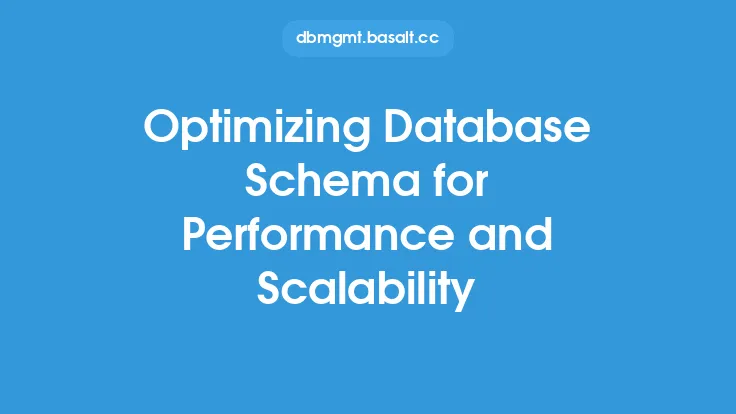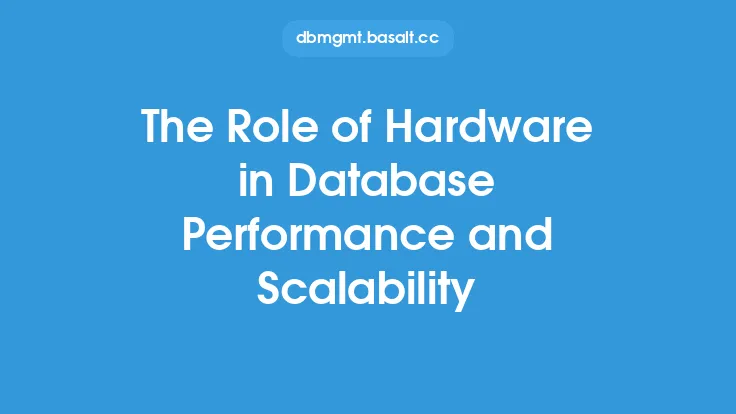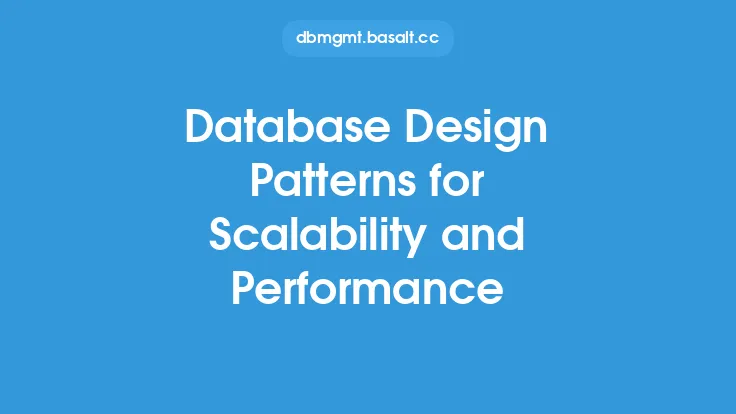When it comes to designing and implementing a database, one of the most critical aspects to consider is configuration for scalability and performance. A well-configured database can handle increased traffic, large amounts of data, and complex queries with ease, while a poorly configured one can lead to bottlenecks, slow query execution, and even crashes. In this article, we will delve into the world of database configuration for scalability and performance, exploring the key concepts, techniques, and best practices that can help you optimize your database for optimal performance.
Introduction to Database Scalability
Database scalability refers to the ability of a database to handle increased load, traffic, and data volume without compromising performance. A scalable database can adapt to changing requirements, such as increased user activity, large data imports, or complex queries, without experiencing significant performance degradation. There are several types of scalability, including vertical scalability (increasing resources such as CPU, memory, and storage), horizontal scalability (adding more nodes or servers to the database cluster), and diagonal scalability (a combination of vertical and horizontal scaling).
Understanding Database Performance
Database performance refers to the speed and efficiency with which a database can execute queries, retrieve data, and perform other operations. Good database performance is critical for ensuring a responsive and interactive user experience, as well as for supporting business-critical applications. Several factors can impact database performance, including hardware resources, database design, indexing, query optimization, and configuration settings. To optimize database performance, it's essential to monitor and analyze performance metrics, identify bottlenecks, and apply targeted optimizations.
Configuring Database Hardware for Scalability
When it comes to configuring database hardware for scalability, several factors come into play. These include the type and number of CPUs, amount of memory, storage capacity, and network bandwidth. A general rule of thumb is to ensure that the database server has sufficient resources to handle the expected load. This can involve upgrading to faster CPUs, adding more memory, or using faster storage solutions such as solid-state drives (SSDs). Additionally, considering the use of cloud-based infrastructure or virtualization can provide greater flexibility and scalability.
Database Configuration Settings for Performance
Database configuration settings play a crucial role in determining performance. These settings can include parameters such as buffer pool size, sort area size, and log buffer size, which control the amount of memory allocated to different database operations. Other settings, such as the block size, extent size, and file system configuration, can impact disk I/O performance. It's essential to carefully tune these settings based on the specific database workload and hardware configuration to achieve optimal performance.
Indexing and Partitioning for Scalability
Indexing and partitioning are two critical techniques for improving database scalability and performance. Indexing involves creating data structures that facilitate faster query execution, while partitioning involves dividing large tables into smaller, more manageable pieces. By creating appropriate indexes and partitioning schemes, you can significantly improve query performance, reduce storage requirements, and enhance data management. However, it's essential to carefully design and maintain indexes and partitions to avoid unnecessary overhead and ensure optimal performance.
Distributed Database Architectures for Scalability
Distributed database architectures involve spreading data and workload across multiple servers or nodes to achieve greater scalability and performance. These architectures can include master-slave replication, peer-to-peer replication, and sharding, among others. By distributing data and workload, you can improve fault tolerance, increase throughput, and enhance responsiveness. However, distributed architectures can also introduce additional complexity, latency, and consistency challenges, requiring careful design and management.
Monitoring and Analyzing Database Performance
To optimize database configuration for scalability and performance, it's essential to monitor and analyze performance metrics. This can involve using built-in database tools, third-party monitoring software, or custom scripts to collect metrics such as query execution time, disk I/O, memory usage, and CPU utilization. By analyzing these metrics, you can identify bottlenecks, detect trends, and apply targeted optimizations to improve performance. Additionally, using automated monitoring and alerting tools can help detect issues before they become critical, ensuring proactive maintenance and minimizing downtime.
Best Practices for Database Configuration
To ensure optimal database configuration for scalability and performance, several best practices can be applied. These include regularly monitoring and analyzing performance metrics, tuning configuration settings based on workload and hardware, implementing indexing and partitioning schemes, and using distributed database architectures where necessary. Additionally, following standard database design principles, such as normalizing data and avoiding data redundancy, can help improve data integrity and reduce storage requirements. By applying these best practices and staying informed about the latest database technologies and trends, you can ensure a well-configured database that scales efficiently and performs optimally.
Conclusion
In conclusion, database configuration for scalability and performance is a critical aspect of database implementation that requires careful consideration of hardware resources, configuration settings, indexing, partitioning, and distributed architectures. By understanding the key concepts, techniques, and best practices outlined in this article, you can optimize your database for optimal performance, ensure a responsive and interactive user experience, and support business-critical applications. Remember to regularly monitor and analyze performance metrics, apply targeted optimizations, and stay informed about the latest database technologies and trends to ensure a well-configured database that scales efficiently and performs optimally.





